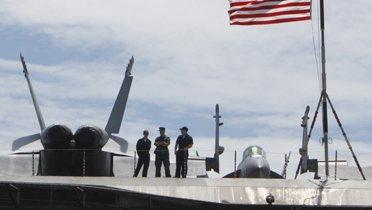EXECUTIVE SUMMARY
Seabasing is an age-old military concept that has been the subject of 20 years of intense discussion and debate following the Cold War. Resuscitated in the 1990s, when diminishing overseas bases and politically hesitant allies created impediments – both perceived and real – to military plans for force projection, seabasing reflected America’s broader if unwritten strategy to be able to operate independently of allies. It thus had strong and often controversial political overtones. The Marine Corps embraced seabasing as the cornerstone of its 21st century vision for amphibious warfare, but the concept, not coincidentally, began a fall from grace when the large ground wars in Iraq and Afghanistan and a renewed emphasis on coalition building signaled a marked shift in foreign policy.
To remain relevant, therefore, and to reflect this change, seabasing must also evolve. In particular, a revised concept of seabasing built around an emerging modular construct has the potential to be a powerful and unifying vision for 21st century maritime forces. Formulated in such a manner, seabasing is not about independence from allies, as it was in its earlier conceptual development, but about uniting allies in an innovative approach to emerging littoral geostrategy.
Seabasing’s story is replete with all the drama and soul-searching that characterized the entire post-Cold War era. At its conceptual core, it purports to move traditional land-based functions to sea, from billeting and logistics to the employment of force. Its roots date back centuries, but its pinnacle lay in the World War II push across the Pacific, when the United States created a vast armada capable of carrying its air, sea, and land forces inexorably westward towards Japan. Planners looked to this legacy when the 1990s Navy shifted its focus from fighting on the seas to fighting from the seas. It was a novel and allegedly transformational vision for a unipolar era.
And as this unipolar moment waned amid the counterinsurgency campaigns of the last decade, the military’s seabasing plans have foundered on the shoals of shipbuilding. With very different opinions about the need for both amphibious and prepositioning vessels, the Navy and Marine Corps struggled through a decade of acquisition plans before eventually canceling the Marines’ hallmark seabasing program in early 2010. Overshadowed by counterinsurgency, seabasing seemed to be “abaft the beam,” yet another relic of an obsolescent military mindset.
As the United States looks beyond Iraq and Afghanistan, however, the world’s littoral nations, and especially the “arc of instability,” will increasingly dominate its attention. Seabasing, if reconceptualized successfully, will have a critical role to play in this troubling region. By uniting maritime nations in “plug-and-play” alliances that mirror plug-and-play platforms, 21st century seabasing can reconcile the need for capacity with the high cost of naval shipbuilding. Challenging traditional assumptions and even identities, this next vision of seabasing can help inaugurate a new era of American grand strategy formulated for a multipolar world. In sum, 21st century seabasing can begin to send foreign policy back to sea.
The Brookings Institution is committed to quality, independence, and impact.
We are supported by a diverse array of funders. In line with our values and policies, each Brookings publication represents the sole views of its author(s).




